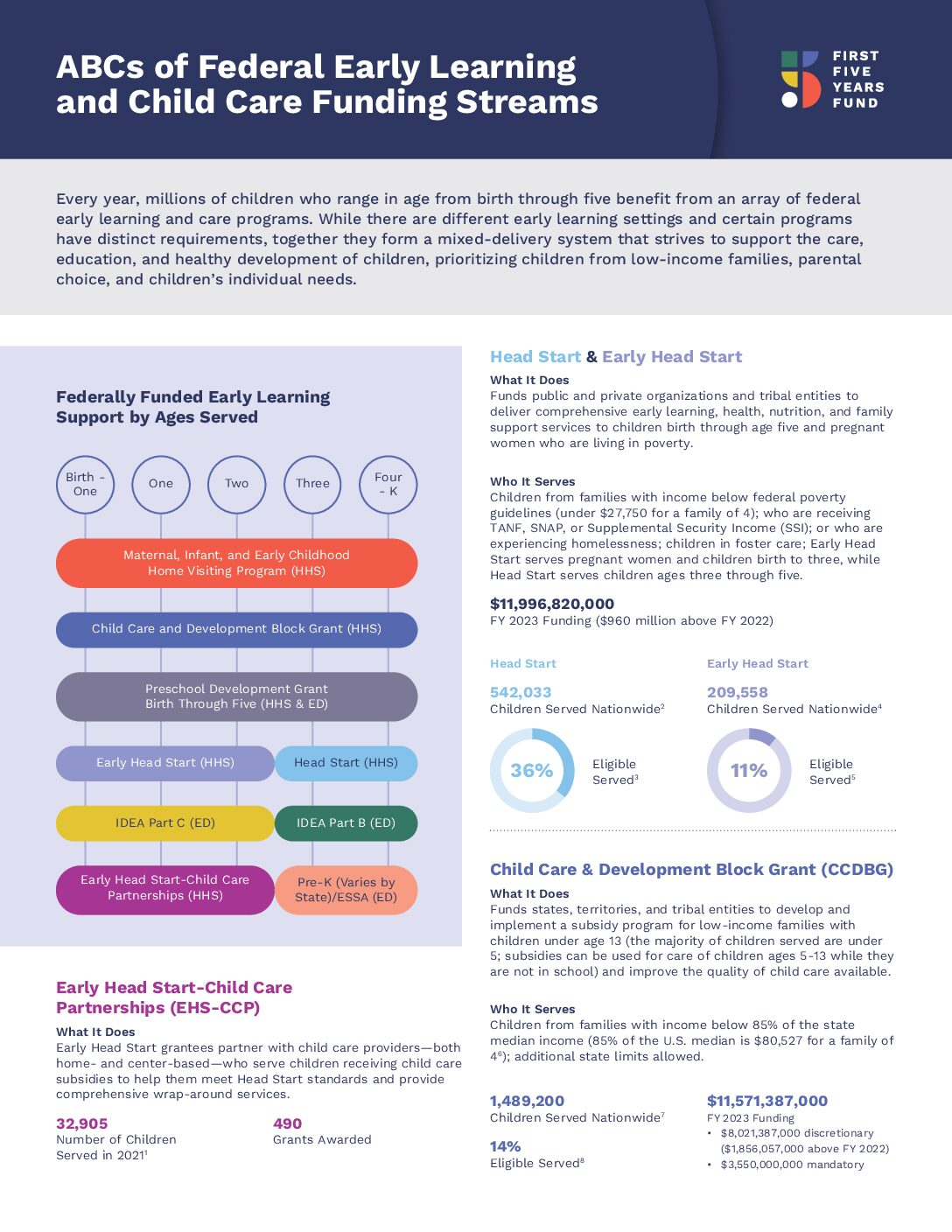
Federally Funded Childcare: Lessons for Working Mothers
Federally funded childcare has emerged as a pivotal solution for enhancing opportunities for working mothers in today’s economy. Recent research conducted by Nobel laureate Claudia Goldin highlights the profound impact of historical initiatives like the Lanham Act, originally instituted during World War II to support mothers entering the workforce. This act not only created childcare facilities but also played a crucial role in promoting gender equity in the workplace. By examining the successes and shortcomings of the WWII childcare program, we can glean valuable insights for modern policymakers seeking to empower women and ensure fair labor practices. Strengthening access to quality childcare is essential for fostering a workforce where all parents can thrive, positively affecting families, communities, and the economy at large.
The realm of government-supported child-rearing options has gained renewed focus in discussions surrounding family dynamics and working parents. Analyzing past policies, particularly those initiated during wartime, sheds light on contemporary challenges faced by mothers striving for a balance between career and family. By revisiting programs like the Lanham Act, we can better understand the historical context of childcare support and its implications for women’s participation in the workforce today. The success of these early initiatives serves as a compelling reminder of the vital link between accessible childcare and improved economic participation, highlighting the need for continued advocacy in this area. As we explore the evolution of childcare solutions, addressing modern demands for flexible, affordable options remains crucial for achieving true gender equality in professional environments.
The Importance of Federally Funded Childcare for Working Mothers
Federally funded childcare programs are critical for empowering working mothers to maintain their careers while ensuring their children receive quality care. The analysis by Claudia Goldin highlights how historical implementations, such as the Lanham Act during World War II, showcased the effectiveness of a national initiative to support working mothers. By providing accessible childcare, women were able to join the workforce in greater numbers, directly contributing to economic growth and stability.
Investing in federally funded childcare not only supports mothers but also promotes gender equity in the workplace. When women have the security of reliable childcare options, they are more likely to pursue higher-wage positions and advance within their careers. This support fosters a more inclusive workforce where women can thrive, driving forward changes that benefit the entire economy.
The Historical Impact of the Lanham Act on Childcare
The Lanham Act, enacted in response to WWII labor demands, was pivotal in creating a network of childcare services aimed at working mothers. Goldin’s research emphasizes that this federal initiative was groundbreaking at the time, directly addressing the pressing needs of a workforce expanded by men’s military service. The act facilitated the establishment of nurseries that provided care, education, and nutritional support to children, demonstrating the necessity of government action in alleviating the challenges faced by mothers.
Moreover, the success of the Lanham Act illustrates how political will can translate into effective social policies. By funding nurseries and extending care for school-aged children, the government effectively mobilized mothers into the labor force. Historically, such support was instrumental in shifting societal attitudes towards women working outside the home, laying the groundwork for future childcare policies.
Claudia Goldin’s Insights on Gender Equity in the Workforce
Claudia Goldin’s insights into the labor market during the WWII era reveal significant trends regarding women’s employment and gender equity. Her research provides a meticulous look into how the introduction of childcare funding allowed women greater access to employment opportunities. Despite societal skepticism about mothers in the workforce, the demand for labor during the war led to a reevaluation of women’s roles, highlighting the economic imperatives behind gender equity.
Goldin asserts that while the Lanham Act was crucial for providing opportunities, it also benefited women who were already employed rather than those out of the labor market entirely. This reveals the complexities associated with policy effectiveness and the need for holistic approaches that consider the diverse needs of working mothers, suggesting that ongoing research is vital to understanding and shaping future childcare initiatives.
Lessons from WWII Childcare Programs
The WWII childcare programs established under the Lanham Act have become a cornerstone for contemporary discussions about the necessity of supporting working mothers. By providing access to funded childcare, these programs not only helped meet immediate wartime labor needs but also set a precedent for ongoing government involvement in childcare services. The lessons learned emphasize that strategic investments in childcare lead to broader economic benefits, particularly for working families.
Furthermore, this historical context serves as a reminder of the importance of equitable policies that address the unique challenges of working mothers today. With current debates around childcare funding and support at the forefront of social policy discussions, understanding the successful aspects of WWII childcare initiatives can guide modern efforts towards achieving gender equity and improving the overall workforce participation of women.
Expanding on the Impacts of the Lanham Act
The impacts of the Lanham Act extend beyond immediate childcare solutions; they influenced the trajectory of women’s labor force participation. Goldin’s exploration reveals how access to childcare under this act allowed women to engage in jobs previously unavailable to them due to familial responsibilities. This movement represented a significant shift in societal norms, showing that with appropriate support, women can be vital contributors to the economy.
As we consider the legacy of the Lanham Act today, it raises vital questions regarding current childcare policies and their accessibility. The historical precedents reveal that when women are supported, they can achieve both professional and personal fulfillment, ultimately benefiting the economy and society as a whole.
Challenges and Opportunities in Childcare Policy
As demonstrated in Goldin’s research, despite advances made through initiatives like the Lanham Act, challenges persist in achieving comprehensive childcare support. While some programs exist, they often do not meet the needs of all working mothers, particularly those from low-income backgrounds. This disparity emphasizes the need for policies that are inclusive and targeted, ensuring that no mother is left without the necessary resources to support both her career and her family.
However, these challenges also present opportunities for policy reform. By examining successful historical programs, policymakers can draw insights that inform contemporary approaches to childcare. Investing in universally accessible federally funded childcare could dramatically uplift working mothers, promote gender equity, and yield substantial economic returns.
Exploring the Gallup Poll Insights
Goldin’s references to Gallup polls from the WWII era indicate a significant cultural resistance to women working while raising children, a sentiment not uncommon today. The historical context provided by these polls illustrates how far public opinion has shifted over the decades but also highlights ongoing challenges with societal acceptance of working mothers. Understanding these insights is critical in shaping modern narratives around women’s work and parenting.
Today, the legacy of these views continues to affect policy decisions and workplace cultures. By promoting awareness of the importance of supportive childcare systems, advocates can work towards positively influencing public opinion, which will, in turn, help facilitate policies that benefit not just women, but society as a whole.
The Role of Men’s Involvement in Childcare
As discussions around federally funded childcare evolve, it is crucial to address the role of fathers and male caregivers in this landscape. Goldin’s research indirectly points to a need for shared responsibilities in childcare, as gender equity should not merely mean access for women but also a collective societal commitment to parenting. Promoting male involvement can help redistribute the caregiving load, challenging traditional norms and fostering a more equitable division of labor in families.
Encouraging fathers to engage in childcare supports not only the nurturing of children but also promotes a work culture that values parental involvement, helping to dismantle the stigma surrounding women in the workforce. A collaborative approach to parenting through community and workplace policies can further enhance support systems for both mothers and fathers.
Building a Comprehensive Childcare Framework
The lessons gleaned from the Lanham Act and other historical childcare initiatives provide a framework for building comprehensive childcare solutions today. As society continues to grapple with effective public policy, there is an opportunity to create systems that not only benefit working mothers but also support families holistically. A comprehensive framework would prioritize accessibility, affordability, and quality of care, thereby meeting the diverse needs of families.
Moreover, implementing a sustainable childcare framework would enable women, especially those in underrepresented sectors, to pursue careers without the burden of inadequate childcare options. Such progress hinges on the recognition of childcare as a foundational element of economic policy, paving the way for a more inclusive workforce and robust economy.
Frequently Asked Questions
What is federally funded childcare and why is it important for working mothers?
Federally funded childcare provides financial support for childcare services specifically aimed at assisting working mothers. This funding is vital as it enables mothers to pursue employment or education without the burden of childcare costs, promoting gender equity in the workplace. Historical research, including studies on the Lanham Act, showcases how such programs can expand opportunities for women in the labor force.
How did the Lanham Act impact federally funded childcare during World War II?
The Lanham Act was a significant piece of legislation during World War II that expanded federally funded childcare. It provided essential infrastructure funding to establish nurseries for working mothers, ensuring childcare services for children aged 2 to 11. The act not only supported mothers by enabling them to join the workforce but also demonstrated the crucial role of childcare in mobilizing labor during wartime.
What role does federally funded childcare play in promoting gender equity in the workplace?
Federally funded childcare plays a crucial role in promoting gender equity by enabling working mothers to engage fully in the labor market. Accessible childcare services help eliminate barriers for women, allowing them to pursue careers and contribute economically. Research has shown that such funding initiatives, like those from the Lanham Act, were essential in increasing women’s participation in the workforce historically.
Can you explain the significance of Claudia Goldin’s research on federally funded childcare?
Claudia Goldin’s research sheds light on the historical significance of federally funded childcare, particularly during World War II through the Lanham Act. She illustrates how this legislation provided vital support to working mothers, which in turn expanded the female labor force. Goldin’s findings highlight the longstanding impact of government policies on women’s employment and the necessity of continued investment in childcare services for future gender equity.
How does World War II childcare relate to modern federally funded childcare programs?
World War II childcare programs, particularly those under the Lanham Act, laid the foundation for modern federally funded childcare services. They demonstrated the effectiveness of government intervention in providing childcare for working mothers. This historical context is essential for understanding current debates around childcare policy, as it emphasizes the need for accessible services to support women in the workforce today.
What can we learn from the Lanham Act about current childcare policies for working mothers?
The experience from the Lanham Act reveals important lessons for contemporary childcare policies, particularly in how government support can effectively mobilize working mothers. It shows that investing in childcare not only assists working parents but also drives economic growth by enabling women to enter and remain in the workforce. Policymakers today can draw from this history to design more inclusive and effective childcare programs.
What challenges still exist for federally funded childcare for working mothers?
Despite its importance, federally funded childcare faces several challenges such as limited scope, variability in service availability, and ongoing debates about funding levels. Programs like Head Start primarily serve low-income families, leaving a gap for middle-income working mothers. Addressing these gaps and increasing the reach of federally funded childcare are crucial steps toward achieving greater gender equity in the workplace.
| Aspect | Details |
|---|---|
| Lanham Act | Legislation to finance infrastructure, later used for federally funded childcare during WWII. |
| Purpose | To support working mothers by providing childcare facilities. |
| Funding | Initial funding of $6 million, with a total of nearly $52 million allocated between 1943-46. |
| Childcare Services | Included nurseries for preschoolers and extended after-school care for children aged 2 to 11. |
| Impact on Labor Force | Expanded the workforce and allowed more women to enter industries contributing to the war effort. |
| Demographic Focus | Benefited women already in employment, primarily in specific localities rather than those with greatest need. |
| Legacy | Remains the only nationwide childcare program funded by federal government to date, despite its limited scope. |
Summary
Federally funded childcare has played a crucial role in supporting working mothers at pivotal moments in history. The research led by Claudia Goldin highlights how initiatives like the Lanham Act during World War II laid the groundwork for childcare services that significantly influenced the labor market and women’s employment opportunities. This historical perspective underscores the importance of continued political will to establish and maintain federally funded childcare programs that cater to the needs of all working families today.


